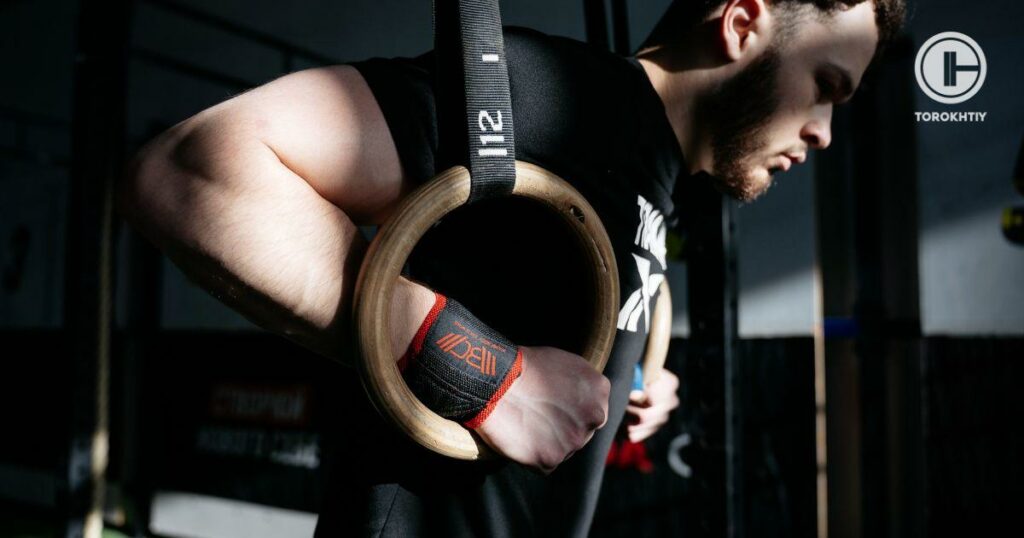Listen to this article:
When you think of yoga, pain, and discomfort are probably not some of the things that come to mind. It’s more about tranquility, mind-body connection, flexibility, and balance. Basically, you think only of the good stuff. But the thing is, if you’ve ever practiced yoga, you know it’s harder than it looks, and it’s not as serene and zen as it appears to a random onlooker.
The good news is that there are ways to help with this, including wrist support for yoga. You always want to keep your joints safe and comfortable (or as comfortable as possible; after all, it’s a workout, so be realistic). Don’t knock this till you’ve tried it, even if you’re experienced, because there’s no way you haven’t felt that twinge of discomfort at least a few times.
Let’s see how to make your wrists like yoga as much as you do!
Contents
Anatomy of the Wrist
No one pays too much attention to wrists until they start to hurt, and exercising will do that to you more often than not. But wrists connect your hands to the rest of your body, so even though they don’t get in the spotlight much, they’re more important than you think.
Your wrist has 8 carpal bones, and it’s kind of like a flexible bridge between the forearm and the hand that allows for a wide range of motion. Ligaments, tough bands of connective tissue, hold these bones together and provide stability. There are also tendons that connect muscles to the bones, which allows your hand and fingers to move. Another crucial element for wrist function is the joint between the radius and ulna bones in the forearm.
As you do yoga, weight-bearing exercises, or just your standard day-to-day activities, all these components work together to make your hands and arms function effectively. When you understand the anatomy, avoiding strains and injuries is easier.

Why Do My Wrists Hurt When I Do Yoga?
Yoga is well known for its many physical and mental health advantages. But things aren’t always easy; you can frequently have wrist pain and discomfort. So, as you work towards improved health, more flexibility, and relaxation, your wrists could occasionally rebel and express their dissatisfaction. Let’s investigate the possible causes of this discomfort.
Improper Alignment
Misalignment of your wrists with your shoulders and fingers puts a lot of pressure on your wrists, leading to pain. This effect is especially noticeable with exercises that involve weight-bearing on the hands. Make sure everything is aligned as it should be to distribute the load evenly.
Weak Wrist Muscles
The muscles around your wrists won’t be able to provide a good amount of support if they’re too weak, which is another reason for discomfort. Try to strengthen these muscles with some exercises that directly target the muscles in your hands and forearms. It won’t work like a magic wand, but your muscles being stronger will take away a lot of discomfort you feel.
Too Much Weight On the Hands
If you put too much weight on any part of your body, it will hurt. It’s the same with your hands, especially in poses like Plank or Downward Dog. It might take some time, but make sure to learn how to distribute the weight evenly across the hands and engage your upper body to help alleviate pressure and pain.
Limited Wrist Mobility
Some poses need flexion, extension, and rotation, and if the mobility of your wrists is somewhat limited, you’ll feel a decent amount of discomfort doing them. Luckily, there’s a quick fix for this – do some light wrist stretches and mobility exercises during warm-up, and your wrists will feel much better during the workout.
Pre-existing Conditions and Injuries
If there’s a condition or injury you’re dealing with, you need to let your yoga instructor know so they can modify the poses for you. You can also use props, like yoga blocks, for extra support.

8 Tips to Avoid Wrist Pain in Yoga
Nobody wants to interrupt their workout, especially not because of wrist pain. It’s annoying, and it can mess up your experience. There’s no shortcut to making your wrists feel like you’re not doing anything, but there are ways of making the pain feel more like a slight discomfort that won’t distract you as much, so let’s see what those are.
1. Correct Alignment
Always pay attention to how your wrists are aligned; they should align with your shoulders and fingers to distribute the weight evenly across your palms. Proper alignment will not only provide your exercise with a solid base, but it will also significantly lessen your pain.
2. Engage Your Core
Consciously engage your core in your practice, especially during poses that put a lot of pressure on the hands, like the plank or downward dog. When you activate your abs, the load gets distributed more evenly across your entire body, so your wrists are not under that much stress.
3. Wrist Stretches
Gentle stretches during warm-ups are a great way to prevent discomfort from happening, and they will improve your flexibility. Movements that involve flexion, extension, and rotation, like wrist circles and wrist flexor stretches, will prepare your wrists for yoga and might even help your range of motion.
4. Strengthen Your Wrists
Take some time to strengthen your wrists to support the load better. You don’t need to do any crazy, complicated exercises; simple wrist curls and extensions will do the trick. Increase the intensity little by little as your wrists get stronger, and over time, you’ll notice a lot less pain during yoga.
Free download: 100 Niche Ideas for Yoga Teachers
Download now
5. Use Props
Try using props if you find that nothing else is working and you need something to relieve discomfort right now. Props can be of great assistance. For example, try putting yoga blocks beneath your hands when performing Plank or Side Plank. This modification will raise your wrists a little bit, lessening the angle and improving the comfort of your posture. Due to their remarkable versatility, props can let you more easily modify exercises to meet your body’s needs.
6. Tweak the Poses
Even though yoga is wonderful, not every pose will be appropriate for you. Be open to making adjustments because there are ways to make every pose work if you’re willing to tweak it. Take Downward Facing Dog, for example. If you bend your knees slightly or widen your stance, your wrists won’t be under as much pressure, but the pose will retain its essence.
7. Get Wrist Wraps
Wrist wraps, as reviewed in this article, can be a great addition to your yoga sessions, especially if the wrist discomfort is something you experience each time. They will compress and stabilize your wrists, reducing the strain, particularly during weight-bearing poses. Wrist wraps are super easy to use, adjustable, and give your wrists extra protection.
8. Listen to Your Body
Body awareness is arguably the most important and valuable tip you’ll get – listen to how your body responds to the pose, and if you feel that it’s too challenging, don’t push yourself through it. It’s better to either modify it or skip it altogether. Your body’s limits can change over time, and you might be able to do that challenging pose in the future, but if it’s causing you pain right now, save it for some other time when you’re stronger and more flexible.

FAQ
What are the best yoga poses for strengthening wrists?
There are a few of them, like Downward Facing Dog, Plank, and Upward Facing Dog. They engage the muscles around your wrists, making them stronger and more stable. Apart from the poses, you can do tabletop wrist stretches and gentle wrist curls to strengthen your wrists.
Can wrist supports help with carpal tunnel syndrome?
In general, wrist supports can help with mild to moderate CTS by providing stability and minimising pressure on the median nerve. However, speaking with your doctor about this would be ideal. Because they provide support and maintain normal wrist alignment, they can also be beneficial during movements exacerbating carpal tunnel syndrome.
How often should I wear wrist supports during yoga?
That depends on you and what kind of discomfort you’re dealing with. If every pose causes pain or discomfort in your wrists, there’s no reason why you shouldn’t wear wrist supports each time. As you get stronger, you can start using them less.
Conclusion
That’s a wrap! We’ve covered the anatomy, the why behind that distracting wrist pain, and some handy tips to keep those joints happy. Remember to strengthen, stretch, and listen to your body. Don’t be afraid to change up a stance or two if needed, and avoid poses that seem more difficult than good.
When your wrists get stronger and you have more experience, feel free to experiment with them. And always remember that you should see your doctor to ensure everything is alright if discomfort continues despite your efforts.
How do you take care of that nasty discomfort in your wrists? Which exercises do you find most helpful in making your wrist stronger? Have you tried using wrist wraps during yoga?
Let’s see what you have to say, and if you have any advice or tips, feel free to share them!
Free download: 25 Ways Yoga Teachers can Earn More Money
Download nowReferences:
- Catherine Woodyard “Exploring the therapeutic effects of yoga and its ability to increase quality of life,” International Journal of Yoga 4, no. 2 (2011 Jul-Dec): 49–54.
- WebMD Editorial Contributors “Benefits of Yoga for Mental Health,” WebMD, https://www.webmd.com/balance/benefits-of-yoga-for-mental-health (accessed February 28th, 2024)




